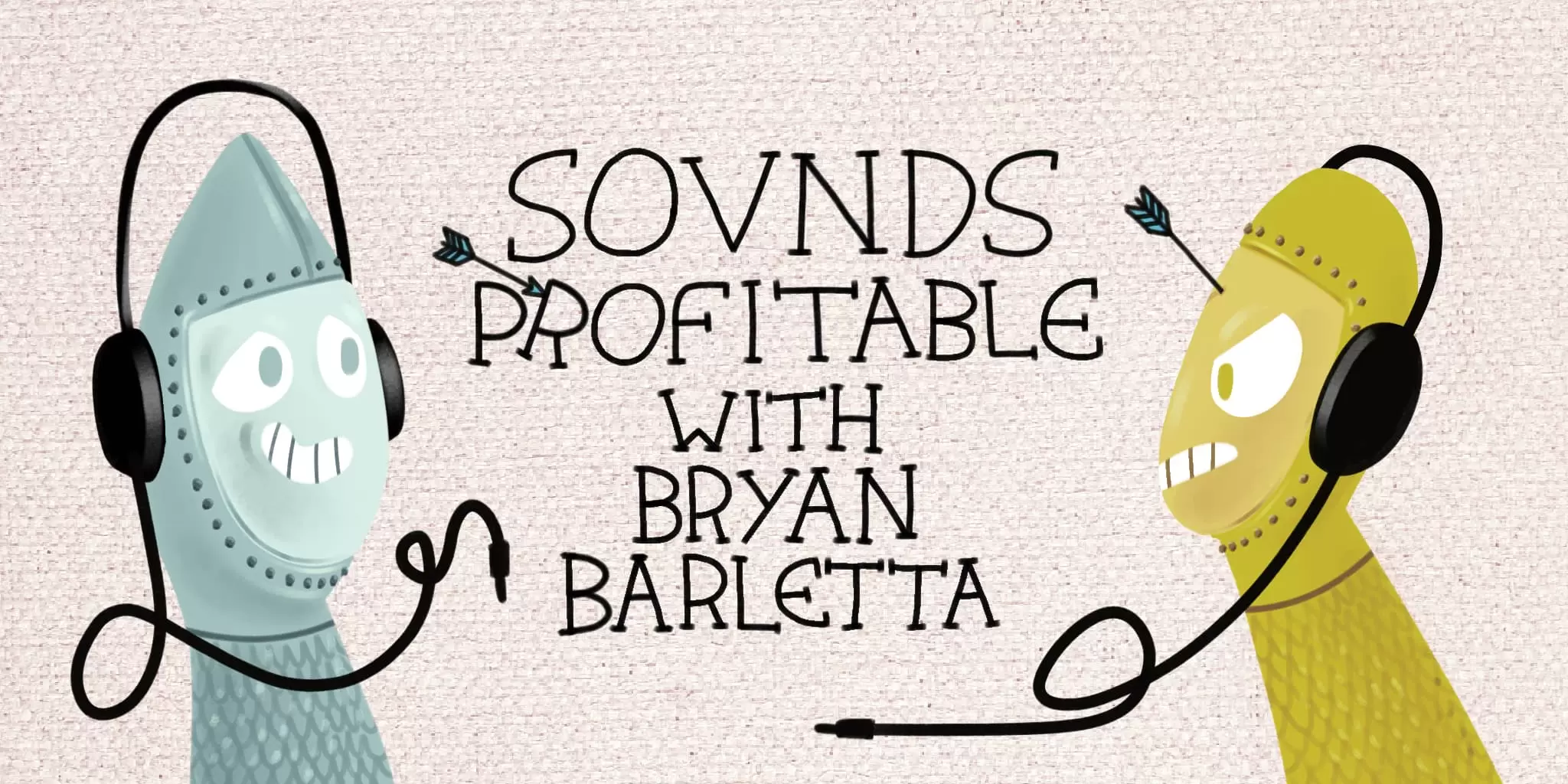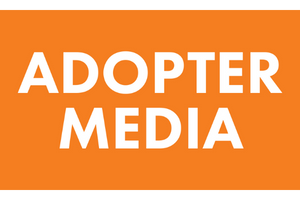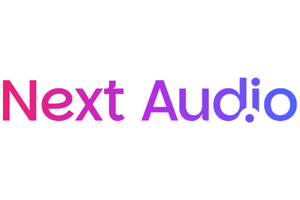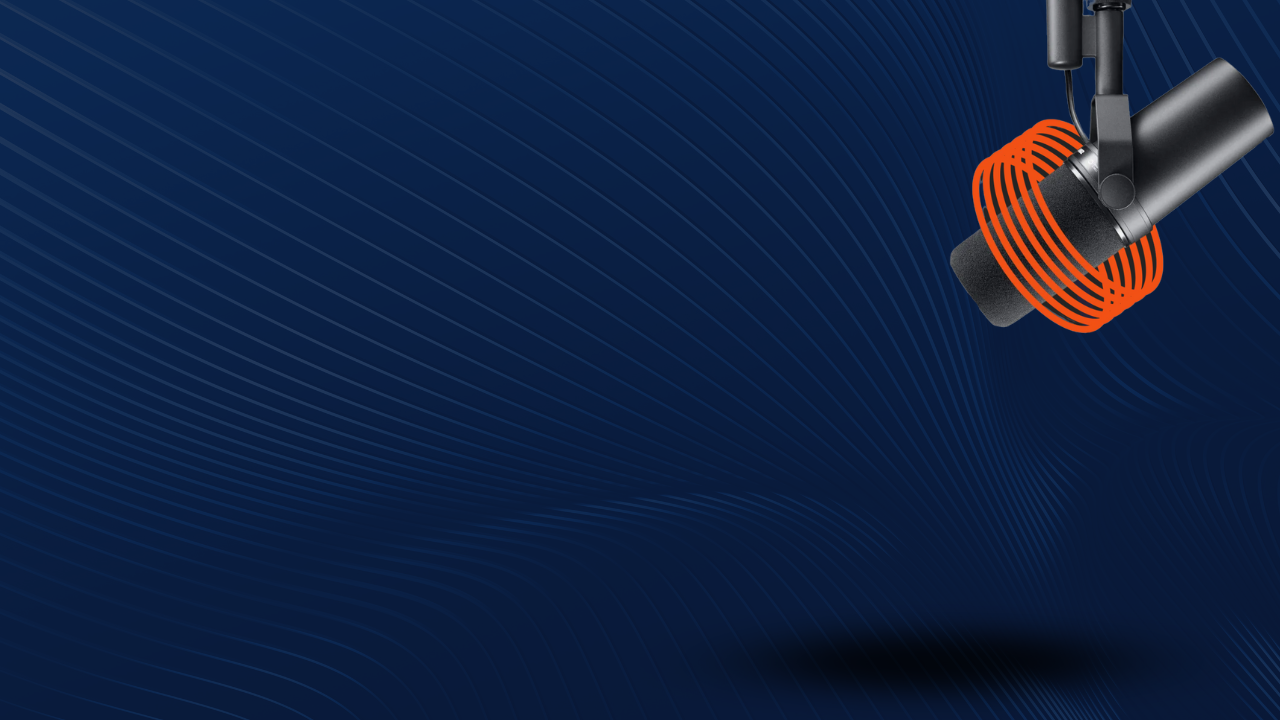We’re introducing Sounds Profitable - Profiles this week on the podcast. Dave Zohrob of Chartable joins us to explain Why Branded Podcasts are Exploding. We’re running a podcast listener study with Edison Research, so please listen to an episode and fill out the survey!
Marcus dePaula doesn’t care if you are a podcaster, video streamer, or a Zoom user: the type of mic we use and how we use it is the most critical part of our online communication that too many people don’t think about. Marcus writes…
I love the Maya Angelou quote: “Words mean more than what is set down on paper. It takes the human voice to infuse them with deeper meaning.” To back this up, there’s a scientific study in the Science Communication journal titled “Good Sound, Good Research: How Audio Quality Influences Perceptions of the Research and Researcher” that proves how poor audio quality makes the presenter less trustworthy and their information less believable to the listener. According to a USC News analysis of the results, “when people heard an interview in good audio quality, they were more impressed with the researcher and the research. This pattern held across each rating—how good the research was, competence of the researcher, how good the interview was, and whether they would share on social media.” The conclusion of their study states: “Listeners are likely to attribute any difficulty they have in understanding you to the quality of your presentation, and the quality of your research. Sometimes it may be better not to be recorded at all than to accept the adverse consequences of a poor recording.” We can clearly apply this same result not just to podcasts, but also to any communication that involves your voice being captured by a microphone.
I’ve heard Bryan Barletta say more than once that anyone who is involved in podcasting in any way should at least be a guest on podcasts whenever they can. As business leaders, why wouldn’t we use the media platform we’re fostering to express our own expertise and establish new connections?
When you get ready to hop on that Zoom call or are asked to speak at a virtual conference, and especially when you are asked to be a guest on a podcast, what microphone would you use? If you think, “my AirPods sound pretty good and I see a lot of celebrities using them for TV interviews via Zoom these days,” I am here to tell you that they are actually the worst microphone you might have. And I’ve done a video demonstration to prove it (more on that below). As a producer and audio engineer, I spend a lot of valuable time (and clients’ money) trying to make AirPods sound passable for podcasts. Even using AirPods for phone calls is worse than speaking directly into your iPhone’s built-in microphone.
There is a tendency to think about what is best for ourselves first: which fun trendy gadget is easiest for us to use? But if we are more interested in the other person’s experience and how that experience can affect our relationship with them, it makes the small additional cost (much less than a pair of AirPods) and minimal effort very worthwhile. Making sure your phone and video call audio quality is better than your laptop’s built-in microphone or AirPods can also be a significant indicator as to the level of your professionalism to those collaborators and prospects on the other end of the line.
To demonstrate the differences between some of the most popular audio capture devices, I’ve created the video below. Hopefully you can clearly hear how using a plug-and-play $69 Samson Q2U microphone for your Zoom calls can be beneficial to your own situation. And if nothing else, you can get a sense of how challenging it can be to get a good sound recording.
Keep in mind that the closer your microphone is to your mouth, the better you will sound and the clearer your message will come across. Also remember to always use some sort of headphones so you can disable the echo cancellation, which can hinder the conversation when your mic gets muted whenever the other person’s voice comes through your laptop speakers. For video calls or online presentations, I like to use affordable in-ear headphones which are less visible on camera. You can use your AirPods just as headphones, but make sure to select your external microphone in Zoom or whatever video chat app you are using.
When we make sure that our audio and video quality is as good as we can possibly make it, our words and our personal brands will have the best chance at connecting and leaving a lasting impression with the person listening.
Make sure to grab your headphones, watch and listen to the video I made which was inspired by a conversation I had with Bryan Barletta. We wanted to provide a demonstration of the differences between common mics’ sound so everyone from podcasters to video streamers to Zoom users can make sure they sound their best and leave the best impression possible for their listeners. Here’s a link to it – “Comparing 8 Types of Microphones for Podcasts and Video Streams.”
New Sponsors
Sounds Profitable exists thanks to the continued support of our amazing sponsors. Each sponsor receives one hour of consulting per month as a way to say thanks.
So much of Sounds Profitable involves recording remote interviews for the podcast and screenshare video sessions for the deepdives, so I’m thrilled to announce that I’ll be working closely with Squadcast to make all of that shine even more than before.
SquadCast allows content creators to capture high-quality audio and video with up to 9 other participants, with recordings saved locally and to the cloud, available for download as separate or mixed tracks.
Want to learn more about sponsorship? Hit reply!
Rel’s Recs

Arielle’s pick for this week is: You’re Dead To Me
You’re Dead To Me is the perfect history/comedy combo podcast. Not only is it incredibly informative and well-researched, but it’s distributed both as a radio show and as an extended podcast episode. In each episode, the guest expert is brought on to share the story of someone from throughout history. Towards the end of the episode, the expert is given two minutes to share in the “nuance corner.” I recommend starting with the Genghis Khan episode.
Market Insights – with ThoughtLeaders
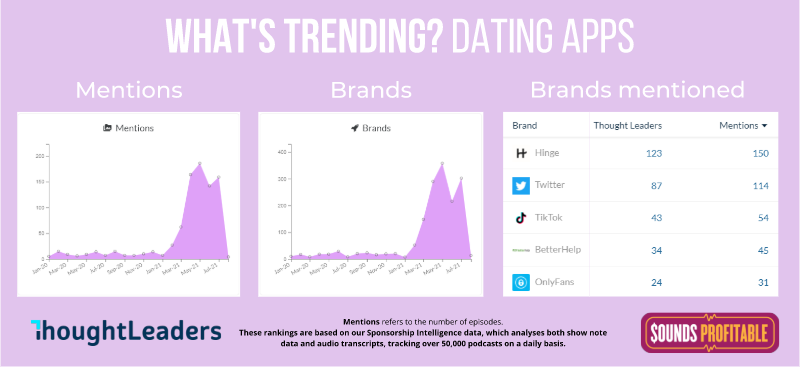
Noam Yadin, Content and Social Media Manager at ThoughtLeaders joins me this week to share insight into current trends:
Dating apps are working overtime!
After over a year of quarantine, lockdowns and social gathering restrictions, it looks like (single) people are taking full-advantage of the ability to actually go on dates. As the graph clearly shows, dating apps are trending – there was a MAJOR increase in mentions of dating apps in March 2021, including Tinder, Coffee Meets Bagel, eHarmony, OkCupid, Match, Hinge, and more.
Top podcasts creating content relating to dating apps: Watch What Crappens, Second Date Update Podcasts, Dates & Mates with Damona Hoffman, and U Up?

